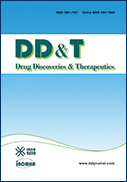Volume 5, Issue 4
Displaying 1-8 of 8 articles from this issue
- |<
- <
- 1
- >
- >|
Editorial
-
2011 Volume 5 Issue 4 Pages 157-158
Published: August 31, 2011
Released on J-STAGE: February 15, 2015
Download PDF (88K)
Policy Forum
-
2011 Volume 5 Issue 4 Pages 159-161
Published: August 31, 2011
Released on J-STAGE: February 15, 2015
Download PDF (36K)
Review
-
2011 Volume 5 Issue 4 Pages 162-175
Published: August 31, 2011
Released on J-STAGE: February 15, 2015
Download PDF (1039K)
Brief Reports
-
2011 Volume 5 Issue 4 Pages 176-180
Published: August 31, 2011
Released on J-STAGE: February 15, 2015
Download PDF (164K) -
2011 Volume 5 Issue 4 Pages 181-184
Published: August 31, 2011
Released on J-STAGE: February 15, 2015
Download PDF (819K) -
2011 Volume 5 Issue 4 Pages 185-189
Published: August 31, 2011
Released on J-STAGE: February 15, 2015
Download PDF (153K)
Original Articles
-
2011 Volume 5 Issue 4 Pages 190-194
Published: August 31, 2011
Released on J-STAGE: February 15, 2015
Download PDF (267K) -
2011 Volume 5 Issue 4 Pages 195-201
Published: August 31, 2011
Released on J-STAGE: February 15, 2015
Download PDF (365K)
- |<
- <
- 1
- >
- >|
